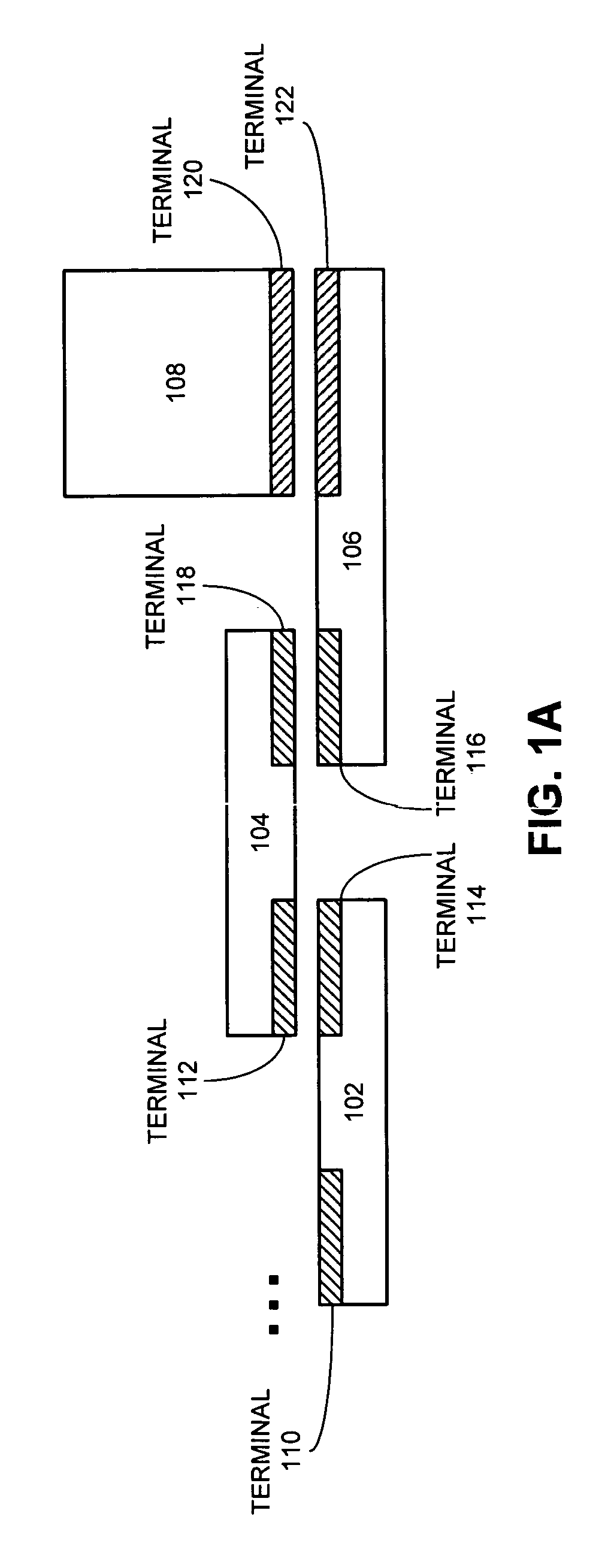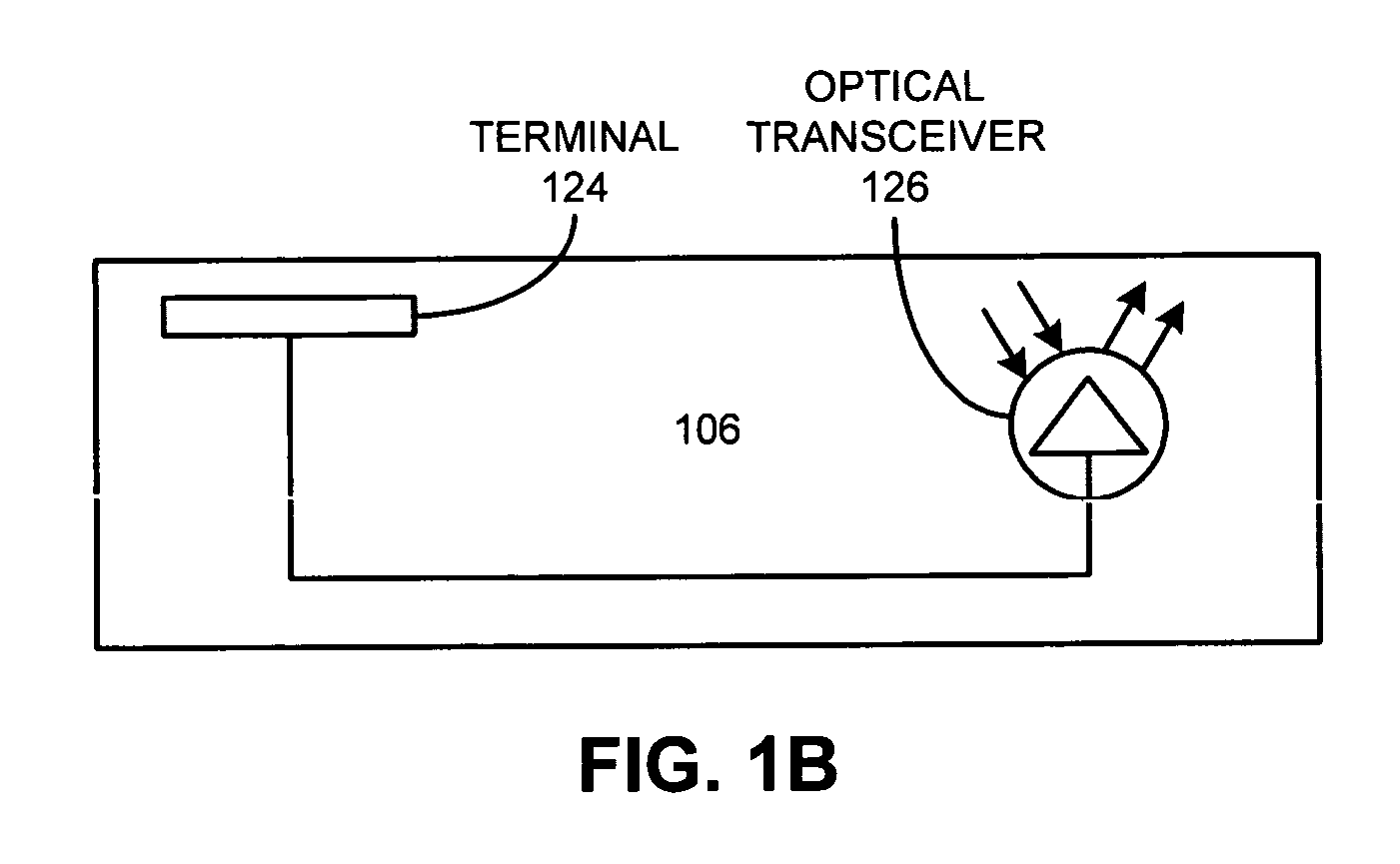Integrated proximity-to-optical transceiver chip
a technology of optical transceivers and integrated circuit chips, which is applied in the direction of optical elements, instruments, semiconductor/solid-state device details, etc., can solve the problems of limiting the number of rows of wire bonds, the bottleneck is expected to worsen, and the advances in inter-chip communication technology cannot match the advances of semiconductor technology, so as to facilitate data transfer and high aggregate bandwidth
- Summary
- Abstract
- Description
- Claims
- Application Information
AI Technical Summary
Benefits of technology
Problems solved by technology
Method used
Image
Examples
Embodiment Construction
[0031]The following description is presented to enable any person skilled in the art to make and use the invention, and is provided in the context of a particular application and its requirements. Various modifications to the disclosed embodiments will be readily apparent to those skilled in the art, and the general principles defined herein may be applied to other embodiments and applications without departing from the spirit and scope of the present invention. Thus, the present invention is not limited to the embodiments shown, but is to be accorded the widest scope consistent with the principles and features disclosed herein.
Integrated Proximity-to-Optical Transceiver (IPOT) Chip
[0032]The present invention uses Proximity Communication techniques to provide a high-density, remateable connector that connects directly to and disconnects directly from high-speed electrical connections on the surface of an integrated optical transceiver chip. In one embodiment of the present invention...
PUM
 Login to View More
Login to View More Abstract
Description
Claims
Application Information
 Login to View More
Login to View More - R&D
- Intellectual Property
- Life Sciences
- Materials
- Tech Scout
- Unparalleled Data Quality
- Higher Quality Content
- 60% Fewer Hallucinations
Browse by: Latest US Patents, China's latest patents, Technical Efficacy Thesaurus, Application Domain, Technology Topic, Popular Technical Reports.
© 2025 PatSnap. All rights reserved.Legal|Privacy policy|Modern Slavery Act Transparency Statement|Sitemap|About US| Contact US: help@patsnap.com



